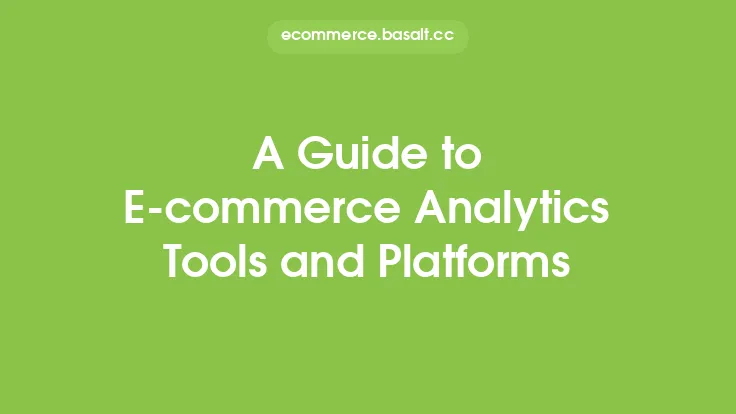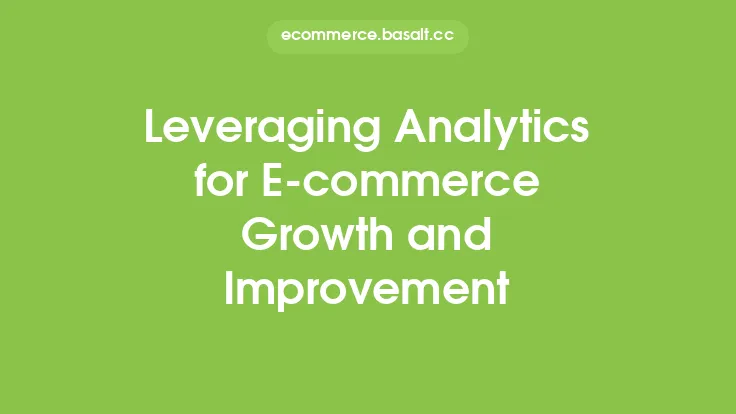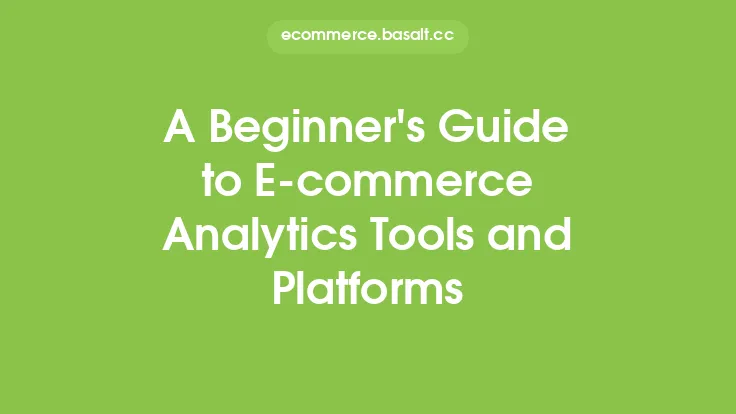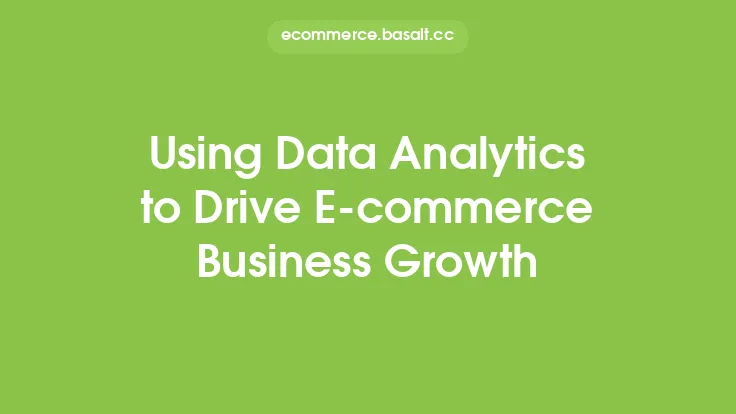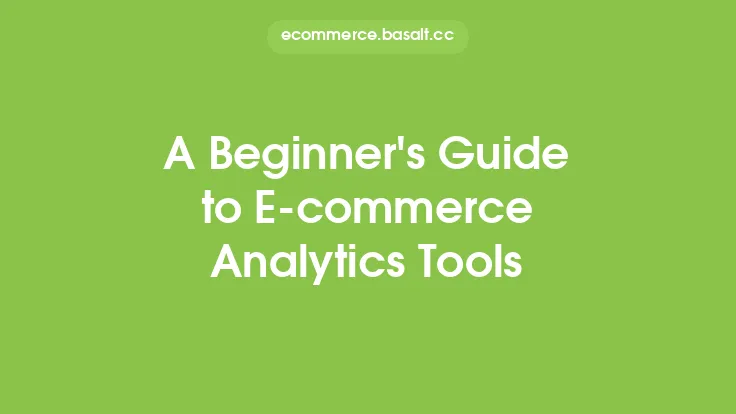The world of e-commerce is becoming increasingly competitive, with new businesses emerging every day. To stay ahead of the curve, online retailers need to leverage advanced analytics tools to unlock growth and drive success. Advanced analytics tools provide e-commerce businesses with a deeper understanding of their customers, products, and market trends, enabling them to make data-driven decisions that drive revenue and profitability.
Introduction to Advanced Analytics Tools
Advanced analytics tools are designed to help e-commerce businesses analyze large amounts of data from various sources, including website interactions, customer behavior, and market trends. These tools use machine learning algorithms, statistical models, and data visualization techniques to provide insights that can inform business decisions. Advanced analytics tools can be used to analyze customer behavior, such as purchase history, browsing patterns, and search queries, to identify trends and opportunities for growth.
Benefits of Advanced Analytics Tools
The benefits of advanced analytics tools for e-commerce businesses are numerous. Firstly, they provide a unified view of customer data, enabling businesses to understand their customers' needs and preferences. This information can be used to personalize marketing campaigns, improve customer experience, and increase loyalty. Advanced analytics tools also enable businesses to analyze market trends and competitor activity, identifying opportunities to stay ahead of the competition. Additionally, these tools can help businesses optimize their pricing strategies, improve supply chain management, and reduce costs.
Types of Advanced Analytics Tools
There are several types of advanced analytics tools available for e-commerce businesses, including predictive analytics, prescriptive analytics, and descriptive analytics. Predictive analytics tools use machine learning algorithms to forecast future trends and behavior, enabling businesses to anticipate and prepare for changes in the market. Prescriptive analytics tools provide recommendations for action, based on analysis of historical data and market trends. Descriptive analytics tools provide insights into past performance, enabling businesses to understand what has happened and why.
Key Features of Advanced Analytics Tools
Advanced analytics tools typically have several key features, including data integration, data visualization, and machine learning capabilities. Data integration enables businesses to combine data from multiple sources, providing a unified view of customer behavior and market trends. Data visualization tools enable businesses to present complex data insights in a clear and concise manner, making it easier to understand and act on the information. Machine learning capabilities enable businesses to analyze large amounts of data and identify patterns and trends that may not be apparent through traditional analysis methods.
Implementing Advanced Analytics Tools
Implementing advanced analytics tools requires a strategic approach, starting with a clear understanding of business goals and objectives. Businesses should identify the key performance indicators (KPIs) that they want to measure and analyze, and select tools that can provide insights into these areas. It is also important to ensure that the tools are integrated with existing systems and processes, to provide a seamless flow of data and insights. Additionally, businesses should provide training and support to employees, to ensure that they are able to use the tools effectively and make data-driven decisions.
Best Practices for Using Advanced Analytics Tools
To get the most out of advanced analytics tools, businesses should follow several best practices. Firstly, they should ensure that the tools are aligned with business goals and objectives, and that they are providing insights that can inform decision-making. Businesses should also ensure that the tools are integrated with existing systems and processes, to provide a unified view of customer behavior and market trends. Additionally, businesses should regularly review and update their analytics tools, to ensure that they are staying ahead of the competition and driving growth.
Common Challenges and Limitations
While advanced analytics tools can provide significant benefits for e-commerce businesses, there are also several common challenges and limitations to be aware of. One of the main challenges is data quality, as advanced analytics tools require high-quality data to provide accurate insights. Businesses should ensure that their data is accurate, complete, and up-to-date, to get the most out of their analytics tools. Another challenge is the complexity of the tools themselves, which can require significant expertise and resources to implement and use effectively. Businesses should provide training and support to employees, to ensure that they are able to use the tools effectively and make data-driven decisions.
Future of Advanced Analytics Tools
The future of advanced analytics tools for e-commerce businesses is exciting and rapidly evolving. As machine learning and artificial intelligence technologies continue to advance, we can expect to see even more sophisticated analytics tools that can provide deeper insights and drive greater growth. One of the key trends to watch is the use of cloud-based analytics tools, which can provide greater scalability and flexibility for businesses. Another trend is the use of real-time analytics, which can provide instant insights into customer behavior and market trends. As the e-commerce landscape continues to evolve, advanced analytics tools will play an increasingly important role in driving success and growth.

